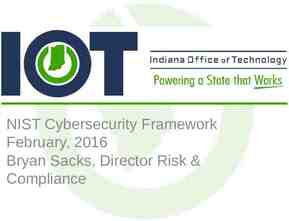ROLLOUT OF DIFFERENTIATED MONITORING AND SUPPORT (DMS) FISCAL YEAR
17 Slides368.24 KB
ROLLOUT OF DIFFERENTIATED MONITORING AND SUPPORT (DMS) FISCAL YEAR 2018 (2017–18) NATIONAL TA CALL, NOVEMBER 20, 2017
Agenda 1.Summary of DMS 2.2017–18 DMS Areas 3.Changes in DMS 4.Overview Document of DMS 5.TAGR 6.What to Expect 7.DMS Activities 8.Long-Term Horizon 9.Questions 2
Summary of DMS Anticipate sending out this year’s DMS notices the week of November 27 DMS is a key component of Results Driven Accountability OSEP uses DMS to: Fulfill its responsibility to monitor grantees Differentiate its level of support Address state-specific needs Allocate its resources 3
DMS Areas for 2017–18 Compliance Results State Systemic Improvement Plan (SSIP) Fiscal 4
Child Find and Correctional Education No longer part of the Organizational Assessment we use to assign levels of engagement Continuing to provide Technical Assistance and making resources available 5
Changes as a Result of Internal Review and State Focus Groups “Designations” changed to “levels of engagement” More consistent communications throughout year New options for targeted TA, including groups and cohorts 6
Overview of DMS Overview can be used to explain DMS to agency leadership Explains process at high level Places DMS in context Reduce concern about levels of engagement 7
TAGR New automated system for conducting Organizational Assessment Benefits: Consistency Efficiency 8
What to Expect DMS Notices to be issued week of 11/27 State lead will contact you to schedule a call in December Clarifications and questions Begin to select DMS activities Start scheduling 9
Sample DMS Notice Each Notice will include a narrative explaining DMS Will list level of engagement for each DMS area For areas with intensive or targeted levels, will list the factors that led to the level In some cases, will explain that no further engagement is needed 10
DMS Activities DMS activities will depend on level of engagement and area Intensive fiscal and compliance activities are mandatory All others are recommended Coordinating TA activities with TA Centers Written responses in all areas with intensive areas of engagement 11
Sample DMS Activities: Intensive Compliance Low Secondary Transition Data: OSEP conducts focused review and discussion of factors that led to level of engagement: Drill down on data Review of policies and procedures Root cause analysis Issue letter summarizing review with findings if noncompliance is identified 12
Sample DMS Activities: Results Targeted Low Reading Proficiency: State participates in NCSI’s Learning Collaborative on Language and Literacy OSEP asks state to report on activities with collaborative and impact on improving performance Brainstorm next steps 13
Sample DMS Activities: Fiscal Intensive OSEP will use protocols on LEA Allocations and Subrecipient monitoring and/or other state-specific issues as appropriate: Request documentation Conduct interviews based on protocols and review of documentation Issue letter, including findings if noncompliance is identified 14
Sample DMS Activities: Fiscal Targeted Group of Part C states with targeted level of engagement interested in OSEP’s “Fiscal 101” OSEP, collaborating with TA providers conducts webinar for interested states, including opportunities for states to learn from each other 15
On the Long-term Horizon Internal review of how we determine levels of engagement for results and compliance Currently using matrices from APR/Determinations Undertaking review to see if this best way and possible alternatives We will be reaching out to both states and TA Centers for input 16
Questions and Comments 17






















